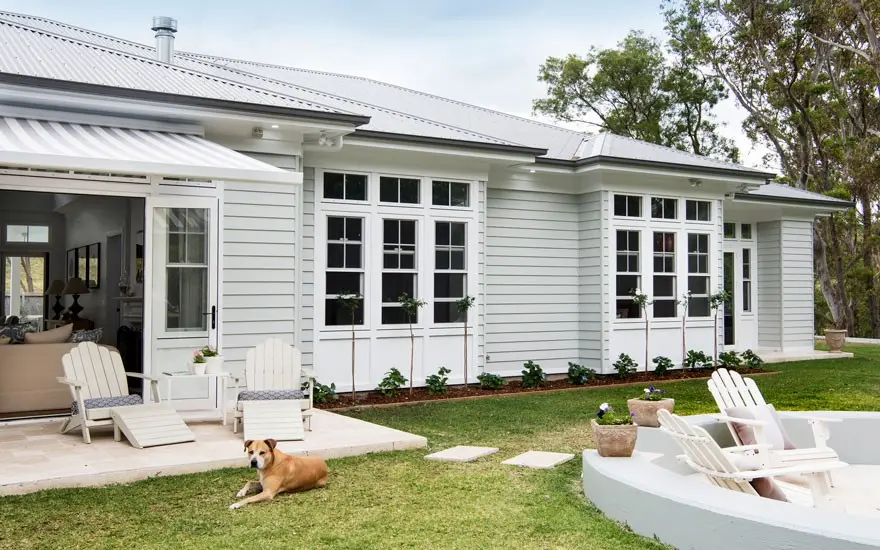New build checklist before you begin
Building your own house is the Australian dream, however without careful planning what should be a fun and exciting journey can sometimes turn into a stressful (and costly) nightmare. Ensure it’s all smooth sailing to building your very own dream home with this must-read guide.
Phase one: before you begin
1. Location, location, location!
While you may own a piece of land with the best view, is it close to schools, public transport, shops and other community services? Make a list of all your lifestyle requirements and ensure your location ticks every one of them.
The next step is to survey the shape and size of your land. This will set parameters as to the size and style of the home you can build. You’ll also need to read up on council restrictions and regulations that can affect the design of your home.
2. Get inspired
The classic Hamtons-style look.

Research
This is the time to do your research and decide on the ‘look’ of your new home. Are you after a classic Hamptons-style home or something slightly more modern? Maybe you need a large alfresco area for all the entertaining that you do? Prioritise your wish list in terms of ‘needs’ vs ‘wants,’ this will give your builder some guidance during the design process.
An elegant contemporary two-storey home.

3. Future thinking
It’s easy to get carried away flicking through Pinterest images of beautiful homes, but building a home that meets your lifestyle demands is essential. Think about timeless design features and hardwearing materials that will stand up to any environmental challenges. It’s also important to consider the resale value of your home. The design of your home should ensure that the house will be worth equal or greater value if you decide to sell in the years to come.
4. Budget considerations
One of the first questions your builder will ask is “what is your budget?” Be prepared to give them a realistic figure that considers everything from contractors to finishings. The ‘golden rule’ calls for a 10% budget contingency that will cover any unexpected costs like delays or damaged materials.
Part of finalising your budget is understanding your sources of finance. If you need to apply for a loan, make sure to consult your lender before the planning process begins so that you can obtain finance as soon as possible.
Phase two: plan it out
5. Contact the experts
You will need to consult several parties when building your home, such as a construction manager, designer, civil engineer, inspector and specialty contractors.
Both the Master Builders Australia (MBA) and the Housing Industry Association (HIA) are great places to start when looking for an accredited building professional.
6. Apply for a permit and get insured
Before construction can begin, it’s important that you consult a designer or architect regarding council rules and regulations. Not all areas are the same, so make sure you seek the help of a licensed surveyor to make sure your plans comply with Local Council laws. It’s also essential that you ensure your builder is properly insured and double check that your building permit has been processed.
7. Timeline
Whether your entire build will take six months or six years, it’s important to create a detailed timeline that will help you monitor the progress of your project. When setting deadlines, keep in mind that unexpected events like poor weather may cause significant delays to your build. As such, it’s a good idea to have financial buffers and timeline contingencies in your overall plan.
Phase three: time to start building
8. Management
Although most the physical and design work will be left to the experts, the homeowner is often responsible for organising contractors, monitoring the entire build and making important decisions along the way. Identify who will be the main point of contact during the process, and ensure they are available to answer calls, appear on site and make emergency decisions when needed.
9. How will payment be made
There’s going to be a point in the process when financial agreements will come to the fore, so you will need to sort out a payment plan to remunerate your builder and contractors ongoing. Have an upfront and honest conversation with your builder about payment expectations and implement an agreed upon payment schedule. You can discuss a budget cap for each stage of the project and set reminders to ensure payments are made regularly.
Ready To Start?
Get your renovation off to a good start with this simple questionnaire to accompany your look.
